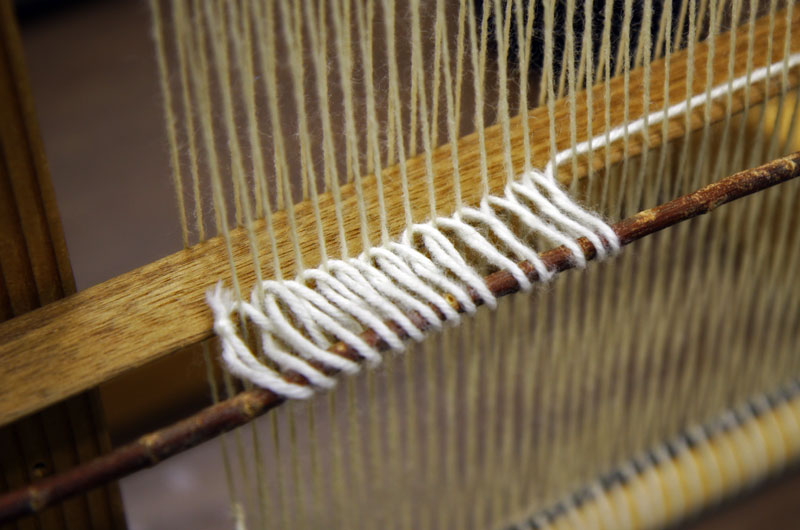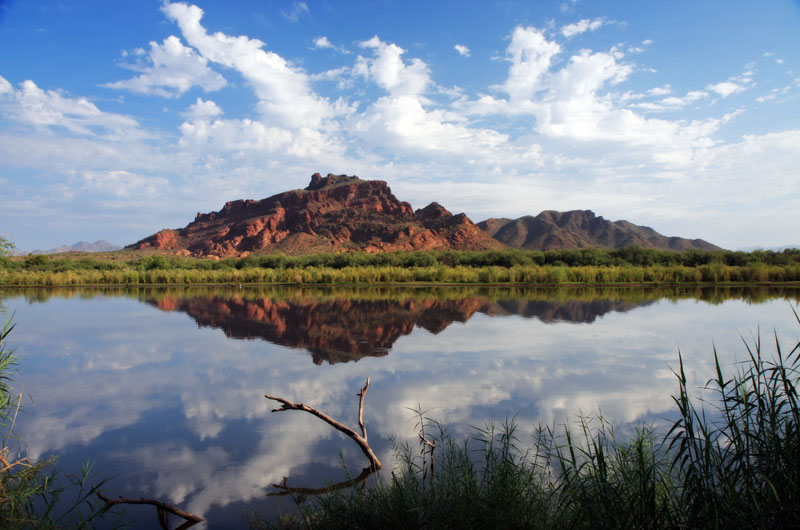
Yesterday afternoon, Caroline and I drove up north to a place in Arizona near the border with New Mexico that we’d never heard of; it’s called Blue. Our accommodations were unique and allowed us to stay right where Caroline was attending a natural dyeing workshop.
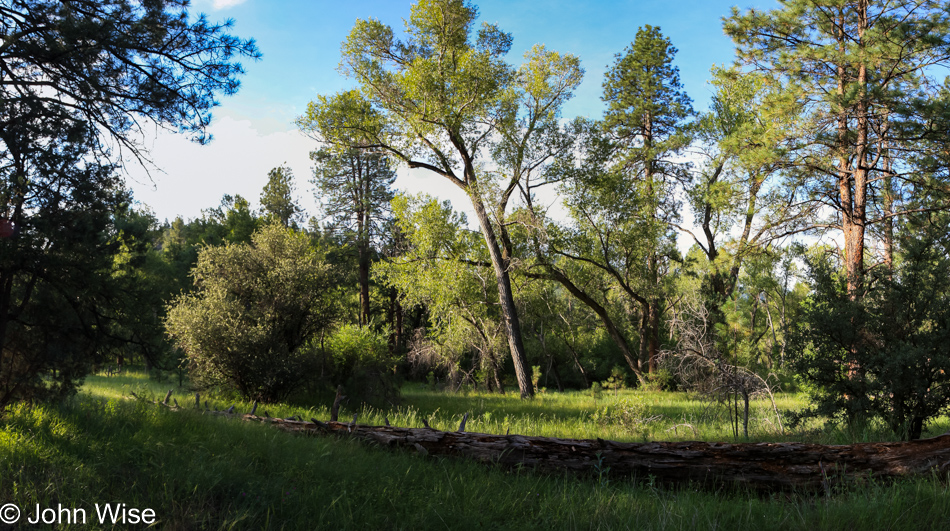
After breakfast in our travel trailer and before the crafting got underway, we headed out for a walk around the countryside that featured perfect weather. Consider that down in Phoenix, it’s well into the 100’s right now.
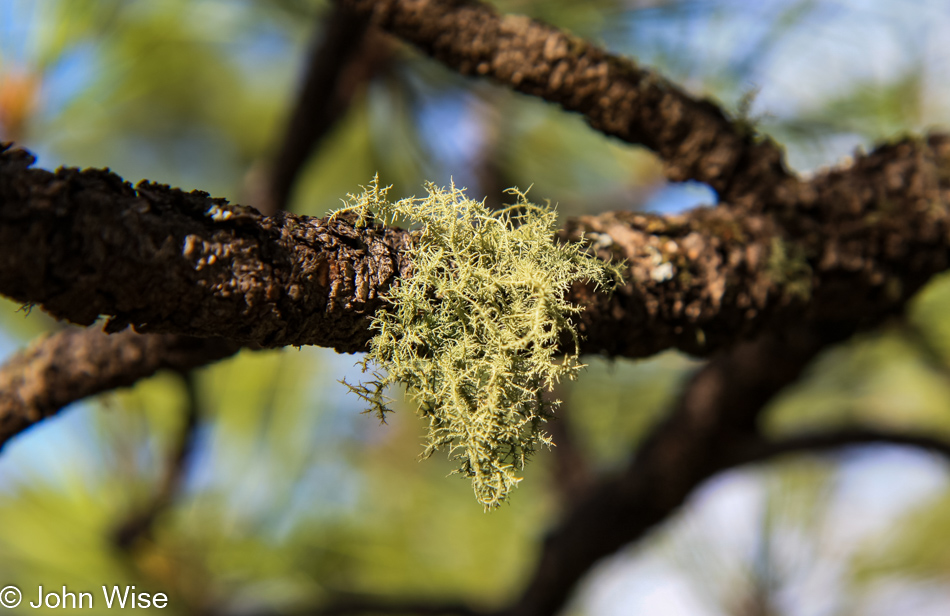
Moss is not something we ever see growing off cactus down south.
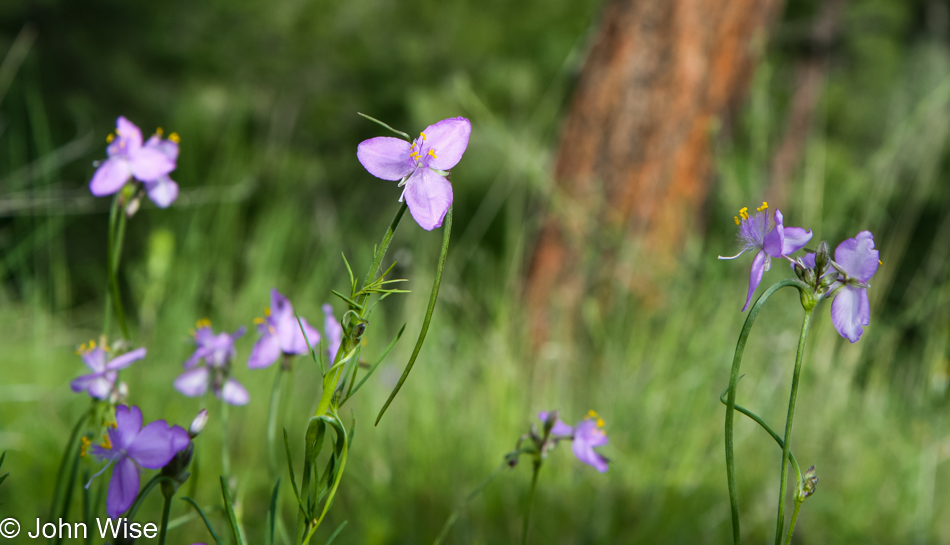
It’s beautiful up here in the mountains.
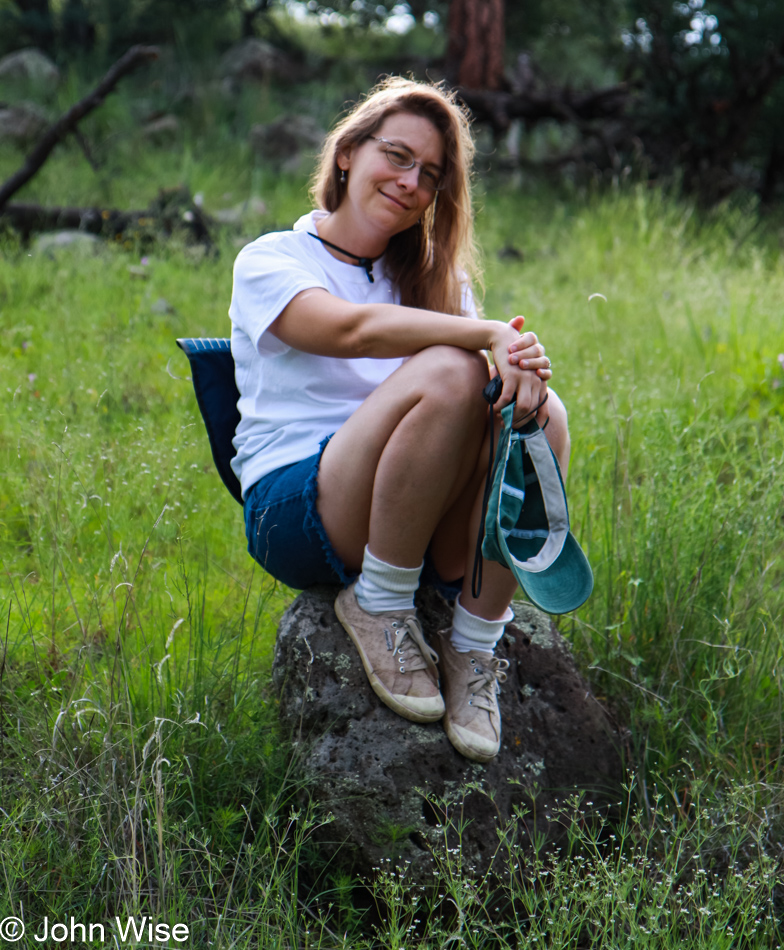
Yep, beautiful.
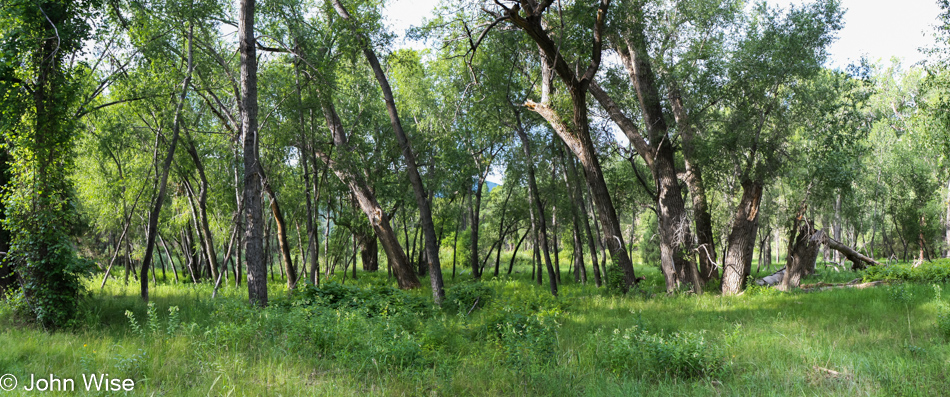
But our walk is coming to an end as it’s time to get to the reason we are up here.

Meet Janie Hoffman, who calls this corner of Blue, Arizona, home and is not only our host but also teaching the course on using plants for natural dyeing.

Sample books of Janie’s experiments using combinations of various plant matter with mordants which make the dyes longer-lasting but can also change the resulting color of the fiber.
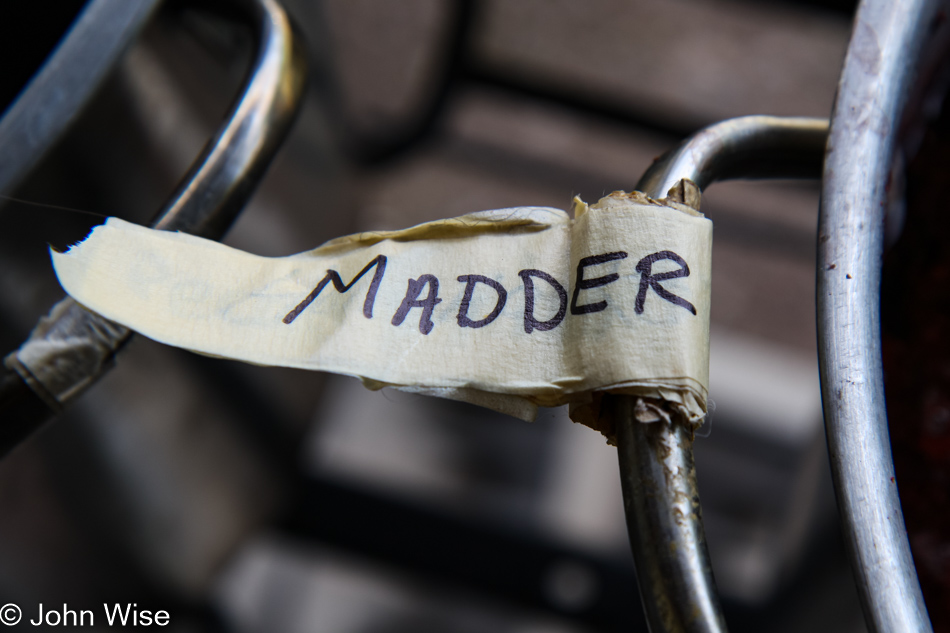
As not all mordants and dyes are skin-friendly and some dyestuffs can stain the container they are in, Janie is using stainless steel pots marked with what will be in them.

Just as the above label said, this is madder root, a popular source of red dye for fabrics.

While this is broom snakeweed.

Sadly, all the mistletoe was in the pot, and none was overhead, so there’d be no kissing underneath it.

Cooking up the dye, getting it ready for dipping yarn into it. Maintaining a specific temperature can be essential for some dyestuffs.

This giant moth was me being distracted by Janie’s beautiful garden that’s nearby. She grows dye plants as well as decorative flowers.

And before we knew it, lunchtime was upon us. We’d brought cheese from our friend Celia, a.k.a. the Barn Goddess, made a salad with things from Tonopah Rob’s farm, and bread from Wildflower. Absolute luxury in the woods.
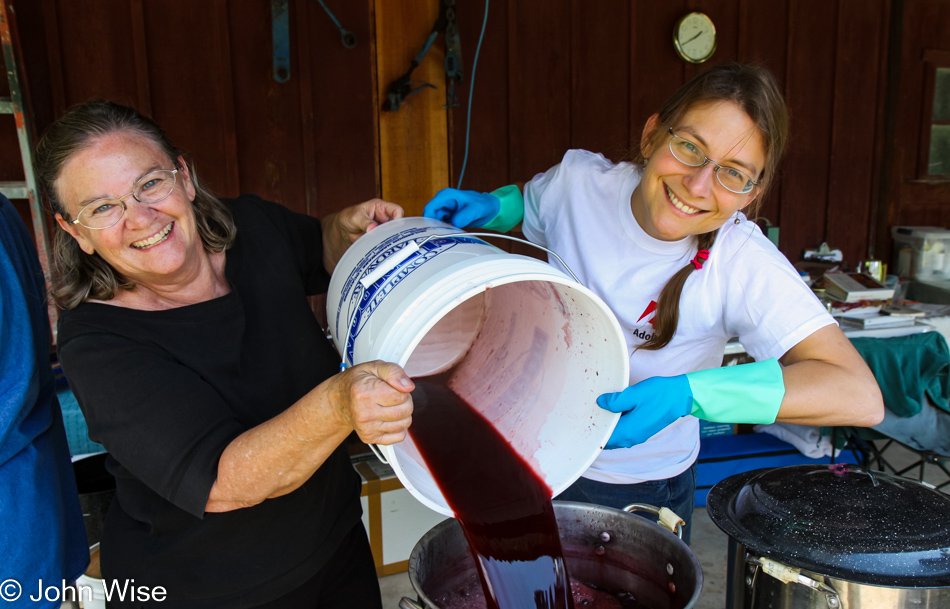
Meet Sandy, who was Caroline’s partner in this operation. These two hit it off as friends the moment they started smiling together.

The yarn goes in.

And needs to soak a while.

More soaking yarn.

Yet more yarn.
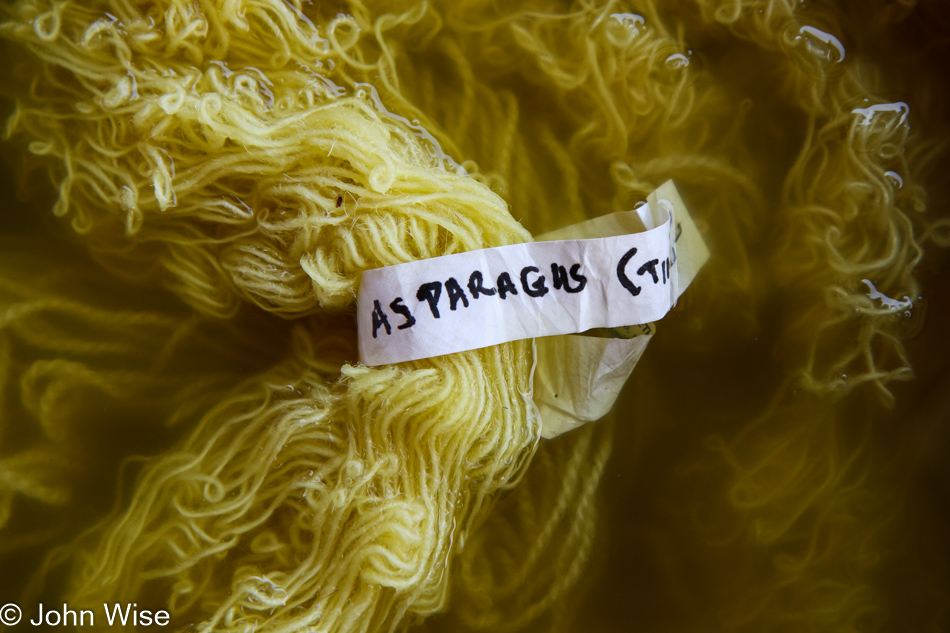
And yep, you guessed it, more yarn being turned into something other than white.

Into the wringer to squeeze out the excess water, but this was after the ladies thoroughly rinsed it.

Up to dry, and the night was ours.
